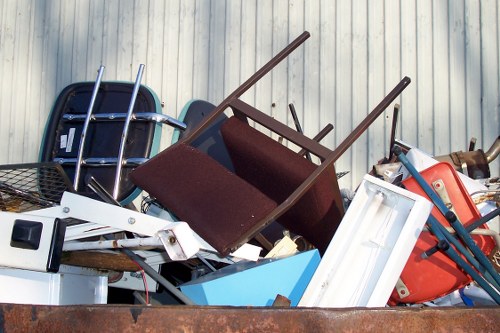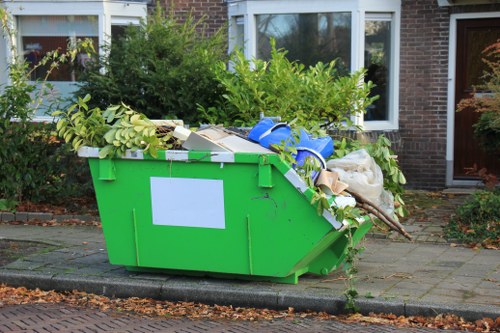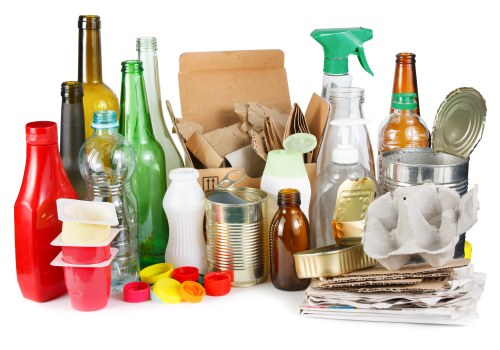Efficient Waste Removal in Woodlands: Keeping Our Environment Clean
Understanding Waste Removal in Woodlands

Waste removal in woodlands is crucial for maintaining the health and beauty of our natural environments. Proper waste management ensures that forests remain pristine and ecosystems stay balanced.
Woodlands are home to a diverse range of flora and fauna. When waste is not properly managed, it can harm wildlife and disrupt the natural habitat. Effective waste removal practices help protect these vital ecosystems.
Implementing sustainable waste removal methods in woodlands not only preserves the environment but also enhances the experience for visitors. Clean woodlands are more enjoyable and safe for hiking, camping, and other outdoor activities.
Types of Waste Commonly Found in Woodlands

Woodlands often face various types of waste, including litter, construction debris, and organic waste. Litter such as plastic bottles and wrappers can take years to decompose, posing threats to wildlife.
Construction debris from nearby development projects can introduce hazardous materials into the woodland environment. Proper removal and disposal of these materials are essential to prevent soil and water contamination.
Organic waste, like fallen branches and leaves, needs to be managed to avoid excessive buildup, which can lead to increased fire risks and hinder plant growth. Composting and mulching are effective methods for handling organic waste.
Effective Waste Removal Strategies

Implementing a comprehensive waste removal strategy is key to maintaining clean woodlands. Regular collection schedules ensure that waste does not accumulate over time.
Community involvement plays a significant role in successful waste management. Organizing local clean-up events encourages residents to take part in preserving their natural surroundings.
Utilizing environmentally friendly disposal methods, such as recycling and composting, minimizes the impact on the ecosystem. These practices reduce the volume of waste sent to landfills and promote sustainability.
Technology in Waste Removal

Advancements in technology have improved waste removal processes in woodlands. Automated collection systems and tracking software enhance efficiency and ensure timely waste management.
Innovative machinery, such as eco-friendly trucks and portable waste compactors, make the removal process more effective and less intrusive to the natural environment.
Data analysis tools help in monitoring waste trends, allowing for better planning and resource allocation. This leads to more targeted and impactful waste management strategies.
Local Waste Removal Services in Woodlands

There are numerous local waste removal services dedicated to keeping woodlands clean. These services offer tailored solutions to meet the unique needs of each woodland area.
Choosing a reputable waste removal provider ensures that waste is handled responsibly and in accordance with environmental regulations.
Local services often collaborate with community groups and local governments to enhance waste management efforts and foster a sense of shared responsibility.
Benefits of Proper Waste Removal
Maintaining clean woodlands has numerous benefits, including:
- Protecting wildlife and their habitats
- Enhancing the beauty and natural appeal of the area
- Reducing the risk of wildfires through proper organic waste management
- Promoting public health by minimizing exposure to harmful waste
Challenges in Waste Removal
Despite the importance of waste removal, there are several challenges faced:
- Limited funding and resources for comprehensive waste management
- Difficulty in accessing remote woodland areas
- Vandalism and irresponsible disposal by visitors
Future of Waste Removal in Woodlands
The future of waste removal in woodlands looks promising with technological advancements and increased community involvement. Sustainable practices and innovative solutions will continue to improve the efficiency and effectiveness of waste management efforts.
Top Nearby Areas for Waste Removal Services
Woodlands is surrounded by several areas that are integral to effective waste removal. Here are the top nearby areas:
- Springfield: Located 5 miles north, Springfield offers extensive recycling facilities.
- Lakeside: Just 7 miles east, Lakeside has specialized organic waste composting centers.
- Greenville: 10 miles south, Greenville provides robust community clean-up programs.
- Riverside: 12 miles west, Riverside features advanced waste collection technology.
- Mapleton: 8 miles northeast, Mapleton is known for its eco-friendly waste disposal methods.
- Hillview: 6 miles southeast, Hillview supports local waste removal initiatives.
- Brookside: 9 miles northwest, Brookside has efficient waste transport systems.
- Pinecrest: 11 miles southwest, Pinecrest excels in hazardous waste management.
- Oakwood: 4 miles west, Oakwood offers comprehensive waste education programs.
- Cedar Grove: 3 miles east, Cedar Grove participates in regional waste reduction efforts.
Conclusion
Effective waste removal in woodlands is essential for preserving our natural landscapes and ensuring a healthy environment. By implementing sustainable practices, utilizing advanced technology, and fostering community involvement, we can maintain the beauty and integrity of our woodlands for future generations.
Frequently Asked Questions
1. Why is waste removal important in woodlands?
Proper waste removal in woodlands helps protect wildlife, maintains the natural beauty of the area, and prevents environmental issues such as soil and water contamination.
2. What types of waste are commonly found in woodlands?
Common types of waste include litter like plastic and wrappers, construction debris, and organic waste such as fallen branches and leaves.
3. How can communities help with waste removal in woodlands?
Communities can participate in clean-up events, follow proper waste disposal practices, and support local waste removal services to help keep woodlands clean.
4. What are the challenges of waste removal in woodlands?
Challenges include limited funding and resources, accessing remote areas, and dealing with irresponsible waste disposal by visitors.
5. What future advancements can improve waste removal in woodlands?
Future advancements may include better waste collection technologies, improved recycling and composting methods, and increased community engagement and education.